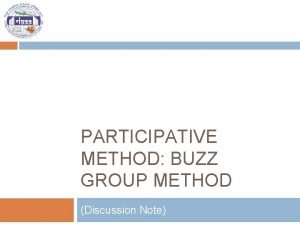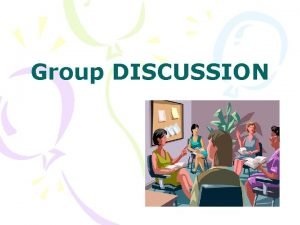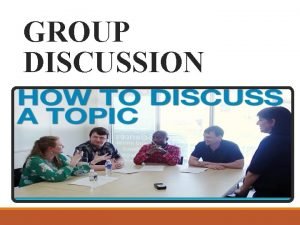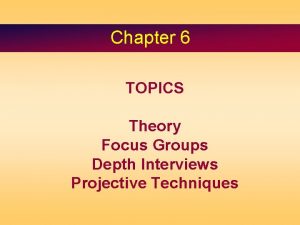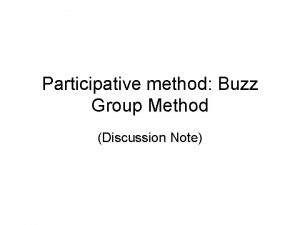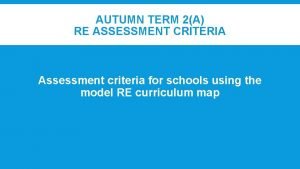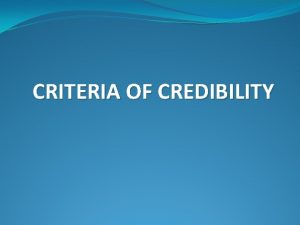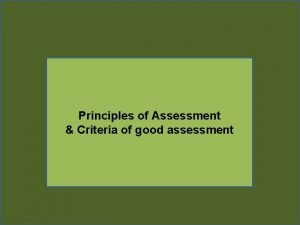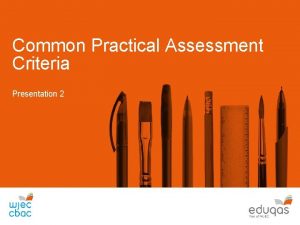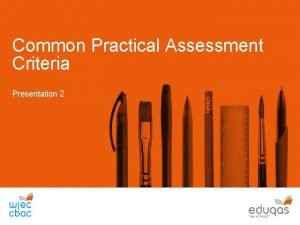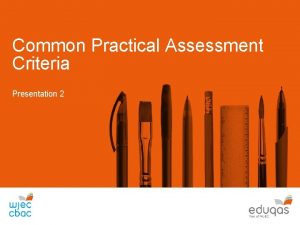Group Discussion National 5 Assessment criteria 2 1












- Slides: 12

Group Discussion National 5

Assessment criteria: 2. 1: Selecting significant ideas and content, using a format and structure appropriate to purpose and audience. 2. 2 Applying a knowledge of language in terms of language choice. 2. 3 Communicating meaning at first hearing. 2. 4 Using significant aspects of nonverbal communication

2. 1 �Can contribute a range of relevant ideas/views opinions with appropriate linkage. �Can take account of other group members’ contributions �Shows consistent alert attention to purpose.

What does it mean? üYou can give several of your own opinion or state facts about the topic. üYou should support points you agree with, perhaps adding to what someone has already said. You should also be prepared to challenge the ideas of others’, with facts or points of your own. üYou are able to take turns, and remain on task throughout. üYou do not dominate the group and not let others have a say. You should be actively listening and encouraging others throughout.

2. 2 �Can use detailed vocabulary that is appropriate to the purpose and audience. �Handles a range of language structures with a degree of accuracy sufficient to ensure that communication is achieved.

What does it mean? ü The words that you use should be suitable for the group you are speaking to and the topic you are discussing. ü It is an assessment so a degree of formality is needed, but don’t use fancy words to sound smart, and alienate your group. Equally don’t use slang or informal language unless it is to make a point. ü You can use at least one rhetorical technique: climax, hyperbole, understatement or emotive language

2. 3 � Can speak with expression and display some fluency and confidence.

What does this mean? üYou should be audible throughout. Your teacher shouldn’t have to ask you to speak up. üYou should not speak too quickly or too slowly. üYou should sound interested üYou should not be too hesitant, but speak fluently throughout. üYou should vary both pace and tone to aid communication: Stress words you wish to emphasise, use inflection etc.

2. 4 � Can communicate using appropriate non -verbal clues

What does this mean? ü You will maintain eye contact with the group and those speaking. ü You might nod your head in agreement or shake your head in disagreement ü You may smile or look confused at a point that has been made. ü When you are talking you may use your hands for emphasis. ü You will not slouch, look at the floor, put your head on the table, not look at anyone, look bored, swing on your seat. You get the idea!!

Childhood Obesity: Own thoughts What is your opinion on the topic? What facts do you have? Do you have an example you can share? What needs to be done to help the issue? What will happen if children continue to get fatter? What services will have issues? Think about the work on nutrition we looked at in support. Can that help? Do you think we are caring about this too much? Or not enough?

Examples What not to do A better example
 Group discussion assessment criteria
Group discussion assessment criteria Simple distillation observations
Simple distillation observations Www.managementstudyguide.com
Www.managementstudyguide.com Buzz group technique
Buzz group technique Effective group discussion
Effective group discussion What are the prerequisites of group discussion
What are the prerequisites of group discussion Group discussion objectives
Group discussion objectives Group discussion is a modern method of assessing students
Group discussion is a modern method of assessing students Group discussion meaning in tamil
Group discussion meaning in tamil Advantages of focus groups
Advantages of focus groups How to lead a group discussion
How to lead a group discussion Buzz method
Buzz method Group discussion images
Group discussion images



